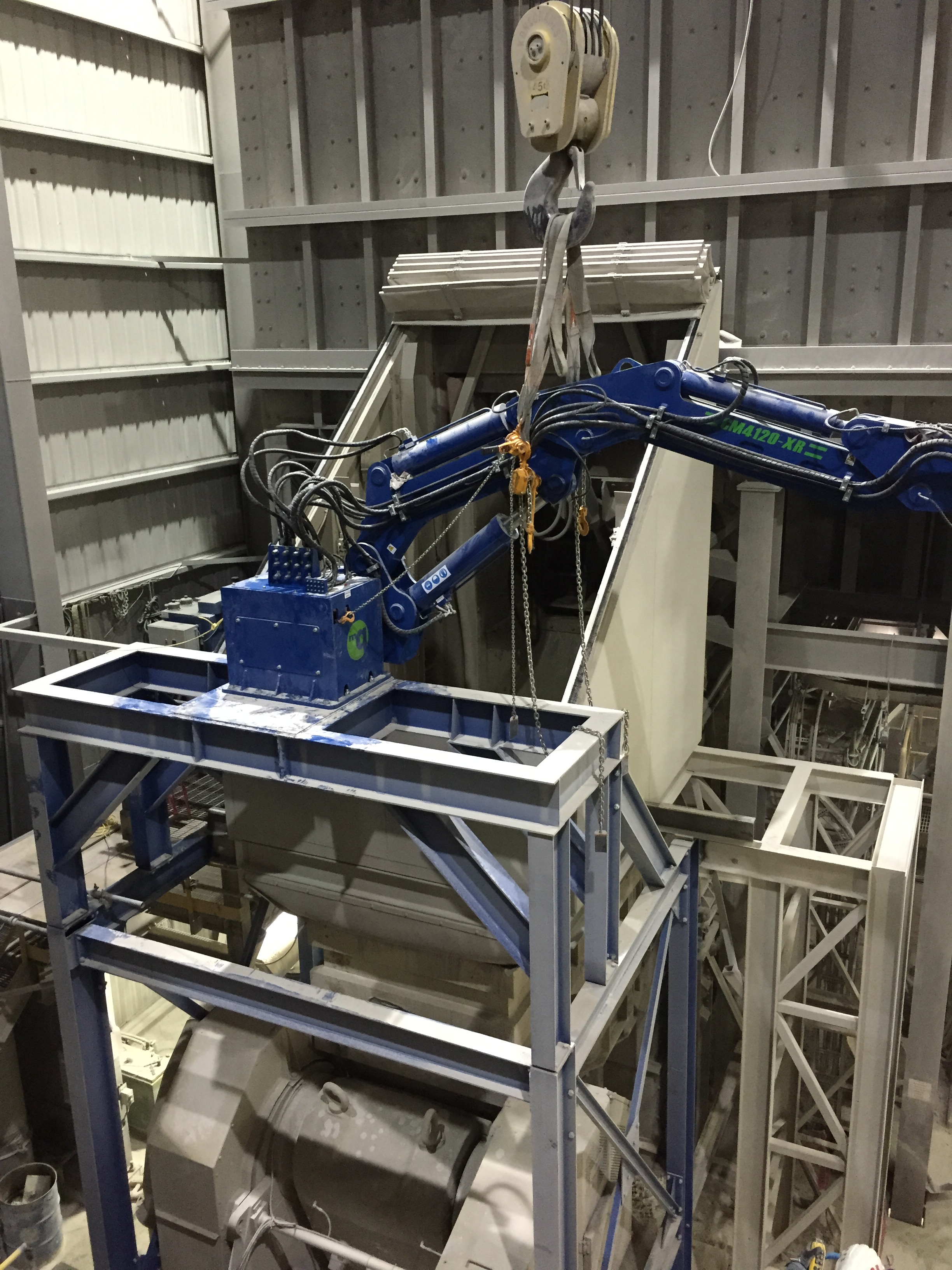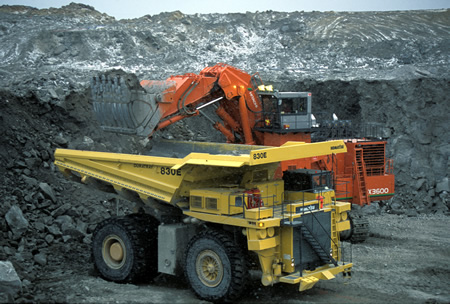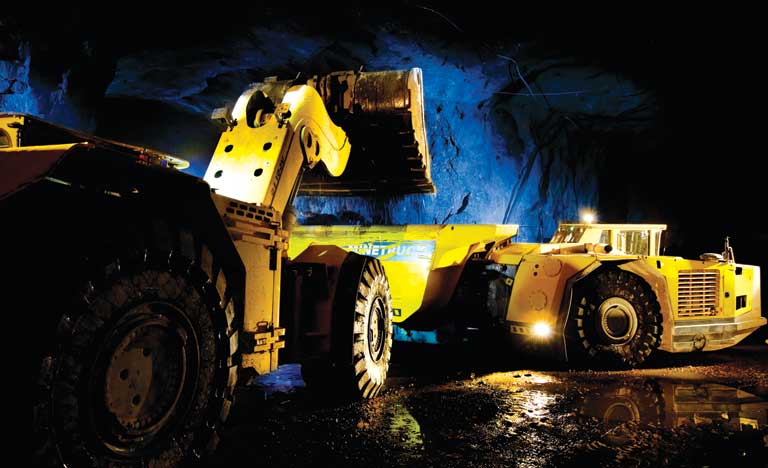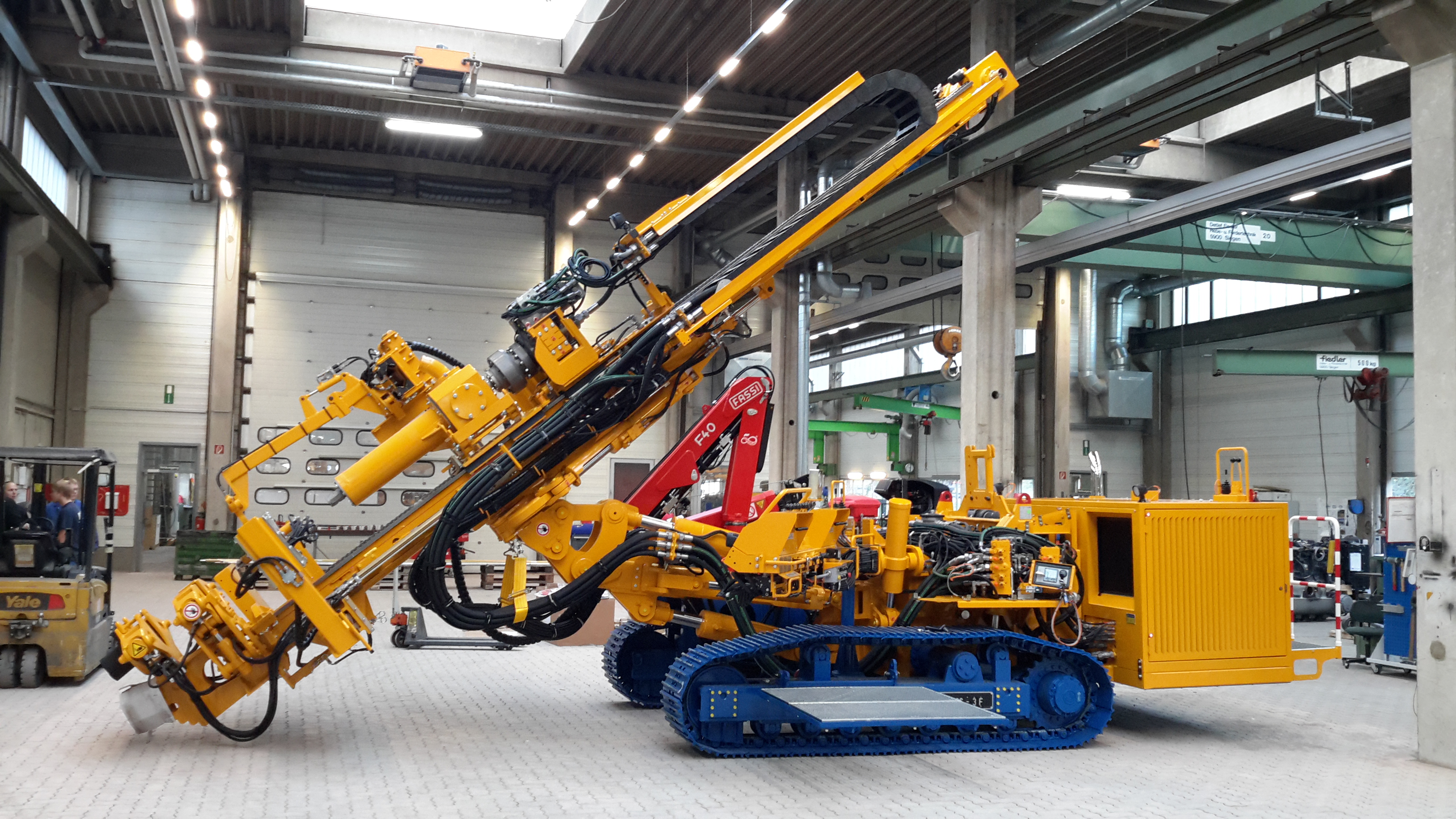Information
-
Equipment Type and Name
-
DDMI Equipment Designation #
-
Client / Site
-
Conducted on
-
Audit team led by:
-
Add signature
-
Location
Audit Details
Assessment Team
-
Team Member
Audit Team Member
-
Name
-
Company or Organization
-
Contact email or phone number
-
Signature
Equipment Details
-
Equipment Type (year, make, model)
-
Gross Weight
-
Primary Use (purpose, location(s), etc.)
-
Secondary Uses
Licensing/Certifications
-
Does this equipment require a statutory license or training certification to operate?
-
License Class
-
License Type
-
Statutory Body
Servicing Checklist
-
Is there a copy of the manufacturer's operating manual available
-
Where is this kept?
-
Who has access to this information?
-
An appropriate action must be added in Section N: "General Comments & Notes"
Maintenance Scheduling
-
Have the service/maintenance requirements been obtained from the supplier?
-
An appropriate action must be added in Section N: "General Comments & Notes"
-
Has the information been set up in Ellipse for this piece of equipment?
-
An appropriate action must be added in Section N: "General Comments & Notes"
-
Have parts been uploaded in Ellipse for warehousing?
-
An appropriate action must be added in Section N: "General Comments & Notes"
-
Has a critical spares list including maximum/minimum inventory requirements been provided by the supplier?
-
An appropriate action must be added in Section N: "General Comments & Notes"
-
Does this equipment require servicing from an outside service provider?
-
Is a service contract in place?
-
An appropriate action must be added in Section N: "General Comments & Notes"
Supporting Documentation
-
List any documents from JHAs, SOPs, studies or similar equipment audits that were used to support this risk assessment
Document
-
Document Title
-
Document Type
-
Document Location
Section A - Operator Access
Operator Access
-
A1 - Appropriate access to equipment fitted with steps or stairs.
-
Rather than ladders, steps or stairs should be fitted where possible. Many injuries have occurred from large steps onto uneven ground.
-
A2 - Steps, rungs and hand holds highly visible and allow 3 points of contact at all times
-
RTSS C4 - Working at height
-
A3 - Steps, rungs, ladders and platforms provide with suitable non-slip surface.
-
A4 - Adequate provision made for operator regular access (pre-start inspection and general operation) and maintenance regular access (greasing, servicing). Review:
-
Engine oil level check and refill points
-
Hydraulic oil level check and refill points
-
Transmission or gear box oil level check and refill points
-
Radiator fluid level check and refill points
-
Fuel refill points
-
Grease point access
-
Access to cleaning windows
-
Ergonomic, design regular access points at ground level. Need to ensure every day tasks are easy to undertake.
-
A5 - Areas above 1.8m from ground level to have Fall Prevention AND / OR Fall Protection systems in place (depending on application): Anchor points should have valid inspection completed for the period.
-
Fall Prevention (to stop a person falling) – For hand railing, require level floor, top rail (between 910mm and 1070mm from floor), mid rail and toe boards (min 100mm high) and safe access and egress. Hand railing to take force of 0.9kN in any direction.
-
Fall Protection (to protect a person if they do fall) – engineered anchor point(s) (to withstand 5000lbs (2300kg) of load) for connecting personnel safety harness and lanyard.
-
RTSS C4 – Working at heights
-
A6 - Areas above ground level where people need to access must to be assessed for the risk of falling, regardless of the actual height. Preference should be given to fall prevention controls (e.g. hand rails).
-
Look at frequency of access, how stable is footing or platform, hand holds, and so on)
-
A7 - Pinch points exposing personnel to risk of injury are to be identified, minimized (eliminated where possible) and controlled.
-
Look at access to machine, as well as any booms, articulation, scissor lift action, hydraulic cylinders.
-
Investigate options for remote control or hydraulic assisted systems to limit personnel – equipment interactions.
Section B - Equipment Controls & Functions
Equipment Controls & Functions
-
B1 - Operator controls located within zone of comfort and reach
-
NIOSH Control Design
-
B2 - Operating controls clearly marked to show function and mode of operation
-
NIOSH Control Design
-
B3 - Equipment shall be equipped with an audible warning device to indicate remote start or movement of equipment or it's components.
-
B4 - Equipment shall be equipped with a manual Emergency Stop/Shutdown which is clearly marked.
-
B5 - Emergency Stop/Shutdown when operated latches either electrically or mechanically such that the actuation can only be reversed by a deliberate action and the equipment does not restart automatically
Section C - Engine Compartment, Cooling & Fuel Systems
Engine Compartment, Cooling & Fuel Systems
-
C1 - The location of services including fuel, hydraulic oil, lubrication oil and electric power within the engine compartment should be avoided where possible
-
C2 - All hydraulic oil, lubricating oil, and other oil circuit pipes and hoses within the engine compartment should:
-
Be constructed to OEM specification
-
Be routed away from hot engine surfaces
-
Be routed away from moving parts, supported and sleeved to give maximum protection
-
Be covered so oil from any leak can’t contact any exposed metal surface where temp exceeds 200°C under any condition of use
-
Be covered so that fuel from any leaks can’t contact any exposed metal surface that exceeds 80°C under any condition of use
-
If not possible to route out of the way, surface may require shrouding or heat shielding
-
C3 - All electrical wiring systems meet regulatory requirements and are protected / shielded from heat and damage
-
CSAM 421-00 Use of Electricity in Mines with CSAC 22.1 Canadian Electrical Code, Mine Act & Regulations part 13
-
C4 - All engine exhaust systems installed so that no flames or glowing particles can be emitted within the engine compartment under any condition of use
-
C5 - Fire wall or barrier is installed to separate the engine compartment from hydraulics components and maintains engine ventilation and cooling effect
-
C6 - Unit fitted with fuel devices requiring power to operate so that isolation of power will isolate fuel delivery
-
C7 - All fuel lines double braid, heat resistant, corrosion resistant metal braided or metal - OEM Specs
-
C8 - All fuel lines clamped with approved clamps
-
C9 - All fuel tanks substantially constructed and protected against damage by collision
-
C10 - All fuel caps are secured to the tank to stop chance of lost fuel caps and contaminated fuel / fire hazard
-
C11 - Where fuel overflow hoses are fitted, the hose extends so its lower than all engine components to minimize the chance of fire
-
C12 - If no automatic fast-fill filling system fitted, filler and vent must be located so that leaks or spillage during refuelling will not contact hot surface
-
C13 - Diesel Engines must run on low sulphur fuel (sulphur content less than 0.25% by weight)
-
C14 - Consider valves and overflow (e.g. bleeder valves, pressure relieve valves, fluid overflows, etc.) positions based on intended equipment use and operating climate to:
-
Avoid debris or water from reaching the fluid system
-
Avoid blockage rendering them inoperable
Section D - Fluid Power and Pneumatic Systems
Fluid Power and Pneumatic Systems
-
D1 - Flexible hoses must be compatible with the hydraulic fluid used and maximum system pressure and temperature
-
OEM & CSA M423-M87 (R2000) Fire Resistant Hydraulic Fluids.
-
D2 - Where a hydraulic system incorporates an accumulator, the accumulator should be connected to the system using components of minimal length and adequate rating. Fittings should be located or otherwise guarded to provide mechanical protection.
-
D3 - A manual bleed valve should be fitted to allow pressure relief for maintenance. Fluid should return to tank. Self-draining accumulators are preferable. OEM requirements for bleed down of accumulators is required in maintenance manuals
-
Isolation / dissipation of stored energy
-
D4 - Nylon or PVC piping for pneumatic control systems of safety related items should be used only in cases where loss of pressure within these systems cause the system to fail to safety. All such piping should be adequately protected from physical damage and shielded from contact with hot and or sharp surfaces.
-
D5 - Only properly specified hoses should be used between an air compressor and an air receiver. Care should be taken to ensure the clamps used are suitable for the job and have the pressure rating stamped on them.
-
D6 - Air compressors and pressure vessels should comply with the requirements of the Mines Act
-
NWT Regs 10.98
-
B51-03 Boiler, Pressure Vessel and Pressure Piping code
Section E - Electrical & Lighting
Electrical 7 Lighting
-
E1 - A single electrical isolation lockout point to be provided, which when activated disables all electrical power supply to the vehicle.
-
NWT Regs 10.21
-
E2 - Isolation of energy sources other than electricity (eg air, water, fluid under pressure, steam) to be identified in operating manuals, and be able to be locked out or de-energized.
-
NWT Regs 10.21
-
E3 - All electrical wiring is to be protected from personnel contact. Electrical distribution boxes are to be lockable to restrict unauthorised entry.
-
RTSS C2 Electrical safety
-
E4 - Electrical safety devices such as earth leakage and overload protection should be installed on equipment
-
E5 - Dash panels and other covers should be made removable where feasible to inspect wiring for pinch points, friction/rub points, proper connections, etc.
-
RTSS C2 Electrical safety
-
E6 - Any remote operated equipment, or any remote starting parts on equipment, must be reviewed against the details within the NWT Mines Safety Act and Regulations sections on Remote Control Equipment.
-
NWT Regs – Remote Operated Equipment, 10.64 to 10.71,
-
E7 - All conveyors require a pull cord to stop conveyor in an emergency, with a manual reset before restarting
-
NWT Regs 10.118
-
E8 - All remote starting conveyors require audible start up warning device for 10 seconds before motion
-
NWT Regs 10.118
-
E9 - Battery fusing must be configured as close to the battery as is practical.
-
Equipment with multiple battery (auxiliary or ‘house’ battery) systems must be checked/verified for proper configuration. The vehicle master switch must remove voltage from each power supply system.
-
E10 - Suitable lighting shall be installed that adequately illuminates equipment for safe operation and maintenance
-
E11 - When operated in the vicinity of mobile equipment - adequate reflectors and or reflective tape should be provided to make it readily visible from any direction. Reflective components should adequately outline the full size of the equipment upon approach in dim light
Section F - Guarding & Shielding
Guarding & Shielding
-
F1 - Guards required on moving components which personnel can contact (drive belts, pulleys, sprockets, flywheels, pistons, tail shafts, conveyor belting). Guards must be sufficient to minimize chance of personnel contact.
-
NWT Regs 10.16
-
F2 - Guard or shields fitted in the vicinity of the exhaust or other hot engine surfaces to prevent both personnel contact, and fuel or oil spraying on hot surfaces (provided they don't trap fuel or oil around the exhaust or hot surface).
-
NWT Regs 10.16
-
F3 - Guards should be designed so that operation and servicing can occur with the guards in place. Guards which need to be removed should be hinged to the machine. Guards should be easy to lift and hold without risk of finger injury
-
F4 - Any covers, shields or guards, if not constructed from steel, shall be constructed from fire resistant material if the failure of the material may place an operator at risk.
-
F5 - No modification has occurred to guards or shielding OR modifications have been signed off by an engineer and constructed/installed to that specification
Section G - Maintenance
Maintenance
-
G1 - A pre-start equipment checklist should be provided and available to the operator. This may be provided by the manufacturer or developed as an SOP by the user.
-
NWT Regs 10.04
-
G2 - Manufacturer / supplier recommended ongoing inspection and maintenance program to be provided.
-
NWT Regs 10.04
-
G3 - For previously used equipment, a written record of past tests, inspections and maintenance work carried out.
-
NWT Regs 10.04
-
G4 - Are there confined spaces which could be minimized or eliminated by design? Are confined spaces marked with appropriate signage?
-
RTSS C5 – Confined spaces
Section H - Labelling & Instruction
Labelling & Instruction
-
H1 - Labels displaying warning at all accumulators that pressure must be safely released before work commences.
-
H2 - Labels displaying warning on all cylinders or vessels which are under pressure.
-
H3 - Labels displaying warning that "hearing protection must be worn" if noise level exceeds 83dB(A) at any location on the equipment.
-
H4 - Labels identify all pinch points (including articulation areas) and coloured red or identified by warning labels
-
H5 - Labels identifying unauthorized access in areas above 110v DC or 32v AC
-
RTSS C2 Electrical safety
-
H6 - Equipment constructed in separate sub-assemblies for transport should have;
-
The weight of The sub assembly and The attachment points for lifting permanently marked on it.
-
The lifting attachment points should have a minimum safety factor of 4 on the ultimate breaking load in relation to the weight of the sub-assembly.
-
H7 - Labels displaying the required operator action in event of a fire occurring,
-
H8 - Labeling of all controls including direction of movement where applicable
-
H9 - Labels should be made of non-corroding material and be attached with non-corroding screws, rivets, etc.
Section I - General Coments & Notes
General Coments & Notes
-
Insert Notes, coments and actions required along with agreed responsible person or organization
-
Note 1
-
Note 2
-
Note 3
-
Note 4
-
Note 5
-
Note 6
-
Note 7
-
Note 8
-
Note 9
-
Note 10









